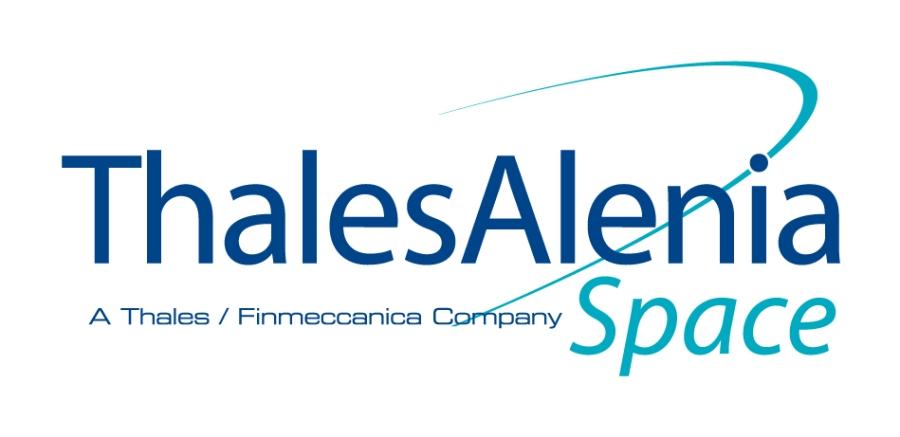
-
StatusCompleted
-
Status date2019-07-09
-
Activity Code1B.115
The work performed in this study can be grouped in the following main competence fields:
- Space Telecom system market study
- Telecom Payload architecture and technologies potential evolution versus market study
- Satellite engineering including system design and all subsystems (mainly Electrical Power , Propulsion, Thermal Control , Structure and Mechanism, Attitude and Orbit Control, and mission analysis)
- Payload technical definition and performances
The project objectives can be summarized as follow:
1) Electrical orbit raising duration reduction
- Current solutions leads to several months from launcher separation to commercial exploitation
- Objective reduction to several weeks (targeting 15 days)
2) To use as much as possible the full power capability of the platform for the payload use
- After EOR phase, power generation capability shall be used to boost payload power
- Need to define new telecom payloads, and associated platform
3) To orientate European roadmaps in order to develop the necessary technologies
- Almost all subsystems are impacted
- Challenging solutions must be found
- Future roadmap shall address high voltage and high power topics

(Credit: Thales Alenia Space / E.BRIOT)
The main challenges of the study are mainly driven by the extremely reduced orbit raising duration requirement. It leads to very large propulsion subsystem and very large solar array and energy storage. In addition, the other challenge is related to the need to use as much power as possible for the payload, which are very dissipative (VHTS). The amount of heat power to dissipate is extremely high, leading to large dissipative surface and very efficient thermal subsystem.
Finally, all this feature must fit in a single satellite able to be launched with an existing or in development launcher, with a bi-compatibility.
The study demonstrated the feasibility of a satellite to perform an orbit raising in 40 days, where current duration is several months , and to offer a payload with 35 to 60kW of power for a VHTS mission, using Ariane 64 with a single launch configuration.
The payload proposed allow mobility market with very small user antenna, keeping the same cost in term of k€/Gbps. However, payload evolution is possible, in order to reduce drastically the cost per Gbps, keeping the same user antenna size than today.
The satellite total height is 9m plus height of earth antenna according to the mission.
Total wet mass is more than 9 tons.
The satellite is compatible with two launchers (Ariane 64 and New Glenn)
GTO to GEO full electrical orbit raising is performed in less than 40 days.
3 reference payloads has been described with 1 VHTS next generation mission, 1 VHTS + HDTV mission and 1 VHTS high flux mission (for mobility market).
Each solar array is 8 meters wide and 41meters long based on flexible solar array technology. The length of the yoke is 5 meters, due to antenna field of view constraints. They provide up to 106kW at beginning of life. Energy storage is proposed to be a Li-ion battery based on technology heritage and growth potential, or alternatively a Regenerative Fuel Cell System.
The propulsion is based on 20kW Hall Effect Thrusters for the orbit raising, performed in ~40 days if the satellite launched by Ariane 6 in GTO+ orbit (2200 km of perigee). For Station keeping, propulsion is based on eight gridded ion engines,.
The largest payload is a 60kW VHTS and very dissipative leading to tens of kW of dissipation. A Heat Pump System (HPS) is then needed to manage this high thermal dissipation level by compressing the refrigerating fluid, and dissipate to space at high temperature limiting the needed radiator surface and limiting deployable radiators.
Structure is based on modules for platform and floors for the payload, as for current SpacebusNEO payload design.
The kick-off of the study took place on March 2017.
First step was to define 3 reference missions for the payload, in term of power, dissipation and mass, linked with a market survey to propose a valuable mission for the operator. Meanwhile, a launcher study performed in parallel to mission trajectory analysis allow to choose 2 compatible launchers and define a maximum mass and size for the spacecraft. The output was the definition of requirement for all subsystem.
Then, each subsystem and payload are described : design and roadmap for the future. A complete satellite architecture, including AIT aspects was proposed, followed by development plan and business analysis.
The project has ended in February 2019, with a design of the proposed spacecraft for the platform and 3 reference payloads. In addition, a major output of the study is the roadmap for each subsystem, including the payload, towards very high power applications and also smaller ones using same technologies thanks to building block approach. Mainly :
- Flexible solar array
- Heat Pump System
- Solar Electric Propulsion
- Lion battery and Regenerative Fuel Cell System





